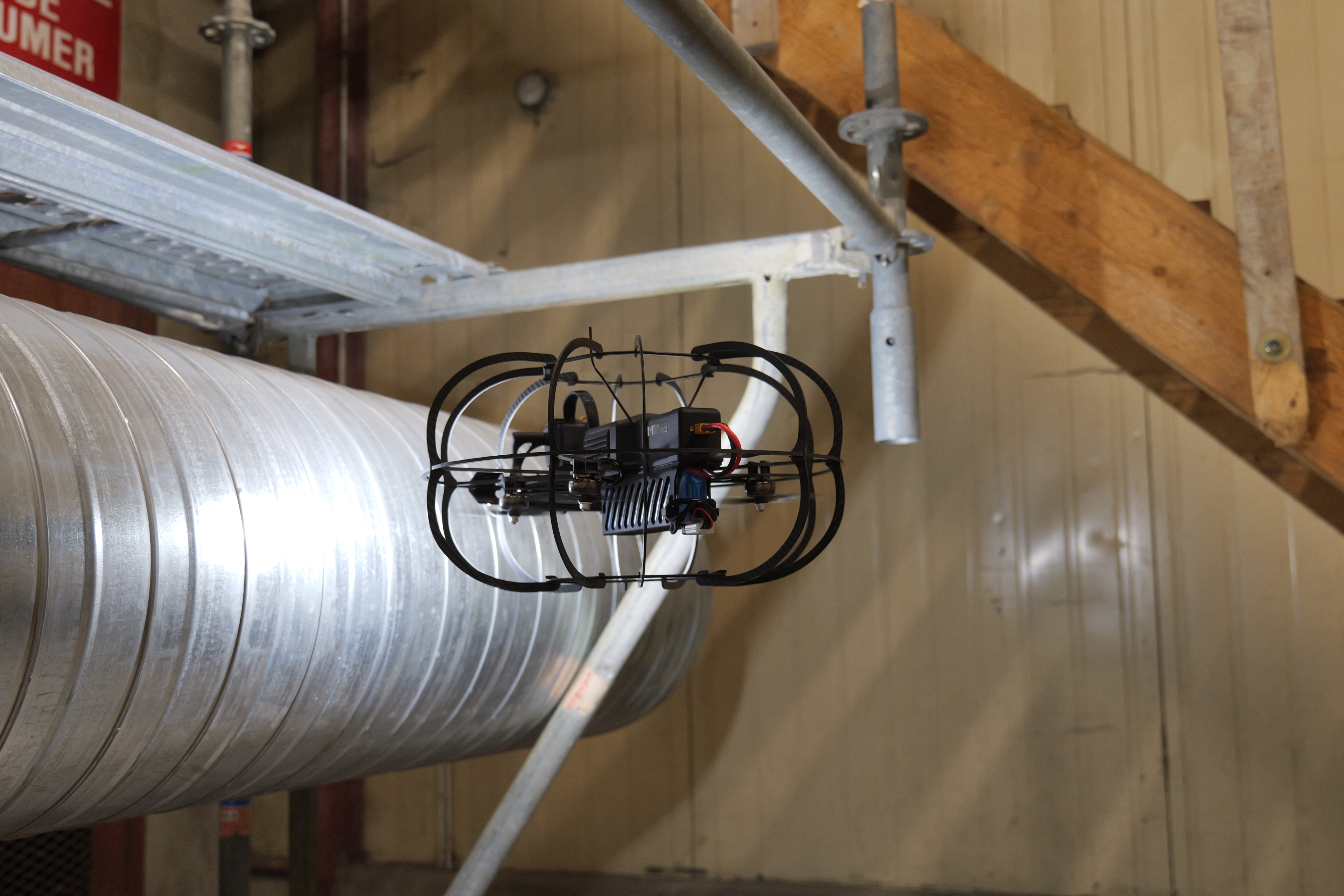/reboot/media/95268e66-9e53-11ed-b306-0242ac14000b/7045ed70-a0fa-11ef-bb20-0242ac120013/1-1-p1002609.jpg)
How far can a drone fly in a confined environment?
The use of drones for confined‑area inspections has become an indispensable solution in many industries, whether for tunnels, ducts, or other industrial spaces that are difficult to access. However, a common question remains: how far can a flying drone travel in these confined environments? This article explores the various factors influencing the distance covered, as well as solutions for optimizing drone performance in these complex environments.
1. Factors influencing range in confined environments
a. Battery autonomy
The range of a drone flying in a confined environment depends on many factors, but one of the most important is undoubtedly battery capacity. Flying in confined spaces requires frequent maneuvering and much greater power consumption management than in open environments. As a result, battery life can be reduced more rapidly if the drone has to perform complex movements, or if the environment places a greater workload on its motors.
The most powerful drones, such as those used for industrial inspections, are equipped with high‑quality batteries capable of extending autonomy, but the distance covered is still limited by the battery's capacity. Power consumption may increase if accessories such as high‑definition cameras or lighting are used.
b. Impact of environmental conditions
Environmental conditions also play a crucial role in a drone's range. In confined spaces, the radio signal used for communication between the drone and its operator may encounter interference from wall materials. For example:
- Metal: Metal ducts or structures allow better signal transmission. This means that in a metal environment, the drone can fly further before communication deteriorates.
- Concrete: Concrete, on the other hand, tends to absorb radio signals, which can limit the drone's effective flying distance.
In addition, humidity, temperature and wind in enclosed spaces can also affect the drone's range and overall performance. Particularly cramped environments, or those filled with dust or gas, can further complicate the situation.
c. Signal range
Signal range is another key factor. In confined environments, signal interference can be significant, especially in tunnels or industrial facilities where dense materials absorb or block radio waves. The latest generation of flying drones are equipped with advanced technologies to counter such interference, but in some cases external solutions may be required to improve communication over long distances.

2. Typical drone performance in confined environments
In general, UAVs flying in confined environments can cover distances ranging from 200 to 500 meters, depending on the environment. However, this distance can vary considerably depending on battery life and signal quality.
- In metal ducts or spaces where the signal is less disturbed, drones can reach a range of 500 meters. Conductive materials such as metal enable better signal transmission, making it easier to communicate and orientate the drone over long distances.
- In concrete environments, the signal can be absorbed or disrupted, reducing the drone's effective range to around 200 meters. This type of environment is more difficult for drones, due to the low transmission of radio waves and the density of the material.
The drones most commonly used for these inspections are equipped with robust communication systems, enabling a stable connection to be maintained even in difficult environments.
3. Solutions for extending drone range in confined environments
There are several solutions for extending the range of drones in confined environments. These solutions focus mainly on improving signal transmission and optimizing battery performance.
a. Using signal repeaters
One of the most effective solutions for increasing a drone's range in confined environments is the use of signal repeaters. These devices reinforce the signal between the drone and the operator, reducing interference from absorbent materials such as concrete. They are particularly useful in environments where wireless communication is weak.
Signal repeaters can extend a drone's range to greater distances, enabling inspections to be carried out in complex spaces, while maintaining a stable connection.
b. Improving the drone's antenna
Directional or high‑gain antennas also optimize communication range. These antennas are able to pick up the signal better
and transmit it over a greater distance, which is essential when the drone is operating in confined, disturbed spaces.
c. Optimizing battery and power management systems
Battery autonomy can be improved by using more powerful batteries or energy management systems that maximize the drone's energy efficiency. By combining better power management with improved signal systems, drones can cover longer distances while reducing the likelihood of signal loss.
Drones flying in confined environments can cover distances ranging from 200 to 500 meters, depending on several factors such as the nature of the environment (metal, concrete), signal quality and battery life. However, solutions such as signal repeaters, the use of high‑capacity batteries, and antenna optimizations can extend this range and improve inspection efficiency.
Professionals using drones for missions in confined environments need to take these factors into account to maximize the efficiency of their inspections. Thanks to modern technologies and the adoption of appropriate solutions, it is now possible to carry out detailed inspections in complex environments, while guaranteeing optimum safety and performance.
:strip_exif()/reboot/media/95268e66-9e53-11ed-b306-0242ac14000b/7e1d7cf8-a2df-11ed-b843-0242ac14000b/1-1-multinnov-pour-fond-blanc.png)
:strip_exif()/reboot/media/95268e66-9e53-11ed-b306-0242ac14000b/7e1d7cf8-a2df-11ed-b843-0242ac14000b/1-1-multinnov-pour-fond-blanc.png)
/reboot/media/95268e66-9e53-11ed-b306-0242ac14000b/dc1f8834-9c28-11ef-8036-0242ac120013/1-1-design-sans-titre-31.png)
/reboot/media/95268e66-9e53-11ed-b306-0242ac14000b/e450df62-9de5-11ef-8deb-0242ac120013/1-1-capture-d-ecran-2024-11-08-103326.png)
/reboot/media/95268e66-9e53-11ed-b306-0242ac14000b/2410fe10-8e8e-11ee-b27d-0242ac12000c/2-2-pipe-inspection.jpg)